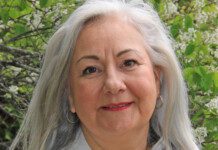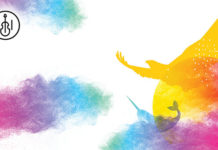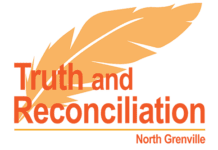by Lorraine Rekmans
My mother is Anishnabek, and at home she spoke Anishnabemowin, like her parents. My father was francophone. They both told me it was better to just learn English, so I wouldn’t have any trouble out there in the world. I was taught English by strict Anglophiles who insisted, with a ruler to the knuckles, that I use the British spelling always. The scars of colonialism left their marks on both my parents, who had managed to survive the country’s attacks on their heritage. So, out of experience and love, they guided me down the road of assimilation.
I am an inter-generational survivor of the legacy of the Indian detention centre system. Once these buildings were called schools; however, that language was designed to sanitize the brutal truth, that these were detention centres to hold children away from their families and force them to assimilate to English culture. Canada as a country had a policy to assimilate Indigenous children, and a policy to extinguish Indigenous rights, and lay the treaties to waste. The nefarious goal was simply to remove Indians from the land and exterminate any Indian claims to rights to the land, so that Canada could continue on its path of resources extraction and exploitation. In the end, this is about access to land, culture, language, and heritage.
In 1969, Pierre Elliot Trudeau proposed a white paper outlining how Canada could accomplish its goals of unfettered access to lands. Many Indigenous and other academics provide evidence to us, on a daily basis, that these policies are still being implemented. From the lack of clean drinking water to the lack of medical assistance, adequate housing and schools, we know Indigenous peoples are pushed to the margins and beyond. Every action that Canada takes with respect to Indigenous people, to this very day, is based in the language of limiting liability on the state, and creating certainty for future development and investment. This includes extinguishing Indigenous rights within the modern-day treaty making system.
There is no mistake that the policy was and is intended to extinguish Indigenous peoples. In fact, there was a gentleman in court in BC just recently who was charged with shooting an elk. He made claims that he was part of the Sinixt people who lived, hunted and gathered in B.C.’s Kootenay region. The government said that was impossible because the Sinixt people are extinct. Yes, this is a country where we have lists of peoples that are extinct, including the Beothuk. Much to Canada’s surprise, they found that he was indeed a citizen of the Sinixt Nation, and his rights to hunt in his own territory are intact, and protected under the Constitution (Section 35). The fact is we are not surprised to hear of extinct peoples, we are shocked to find survivors.
There is no doubt that the discovery of the 215 Tk’emlúps te Secwépemc children’s bodies has shaken Canadians to their core. This stark evidence of the cruelty and inhumanity involved has shaken us all. I am not shocked that the bodies of children are being found, because I was told the stories while I was growing up. But I am perplexed that the Christian faith, which concerns itself heavily with the afterlife, and with intense ceremony on dying, could dump the bodies of small children into unmarked graves and try to erase their existence. From a culture that celebrates ascendence into heaven, accompanied by prayers, flower and ritual, this horrific act is an abomination. Even cave-people put flowers into graves.
We hear much about the Truth and Reconciliation Commission (2015), but Canadians hear very little now, about the Royal Commission on Aboriginal Peoples RCAP (1991). RCAP was a report that presented 440 recommendations calling for sweeping changes to the relationship between Aboriginal people and the government of Canada. The TRC report made 94 recommendations. Canada has failed to address the significant RCAP recommendations over the last 30 years, and is grossly behind in implementing any of the 94 recommendations made six years ago. The recommendations keep piling up as we keep unearthing the bodies.
Canada is on the verge of celebrating Canada Day on July 1, as the United Nations and the world watches us, scouring the sites of these penal institutions looking for the bodies of small children, reeling from the evidence of this genocide. As Indigenous people, we have always known what the church and state did to us, and what Canada’s government continues to do to us. We have watched, and now the world watches with us.
Of course, I am hurt, and sad, and angry, but I am not without hope. In my grandmother’s lifetime it would have been impossible for an Anishnabe woman to be the editor of a settler newspaper, yet here I am. There are so many survivors of this horrific assault that are contributing every single day, in the kindest ways they can, to make this a better country. No matter what evil, vileness, and pain they endured, they still find a way to give, to make this country vibrant, with a belief that diversity will one day be celebrated, beyond our drumming and dancing.
We have to acknowledge those survivors, and celebrate the gifts they bring to this new era in Canadian history, while we mourn the loss of those little lives who had their flames extinguished so cruelly. What gifts they could have brought to this land we will never know. Let us think of the pain endured by the families who lost these children, and stand with them in solidarity on our journey of Truth and Reconciliation, and our quest for accountability.









Excellent article!
A very thoughtful and informative article that brings the writer’s own experience into a converging conversation with Canadian political history and the recent horrific discovery in Kamloops.